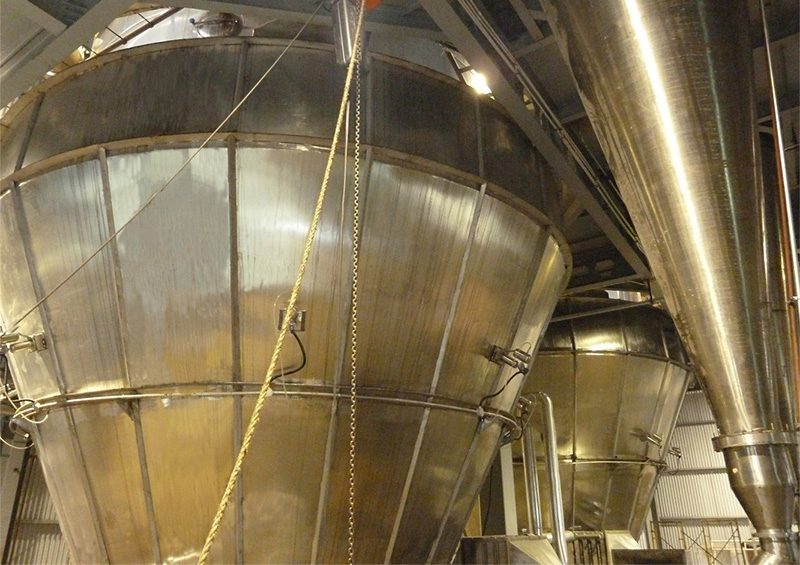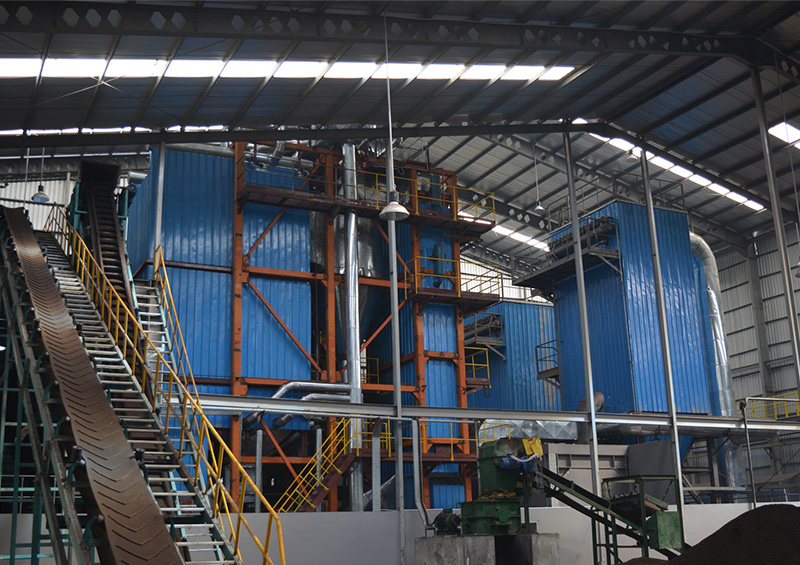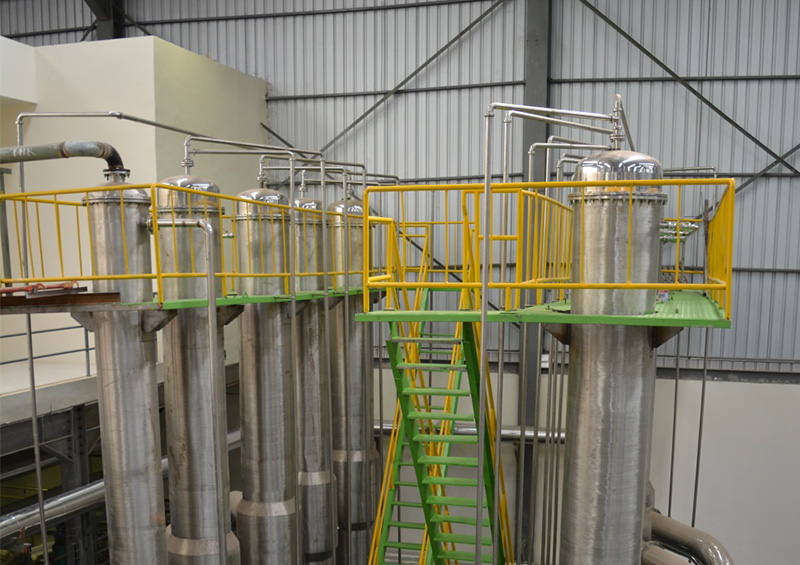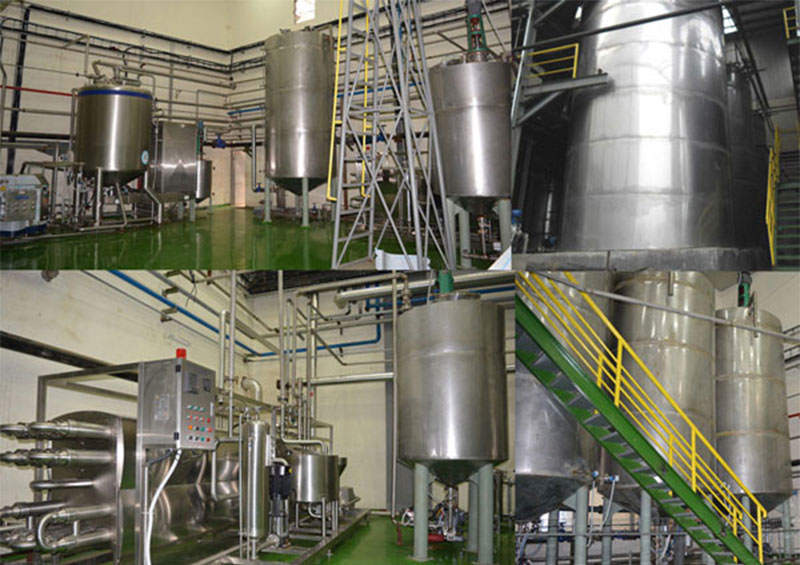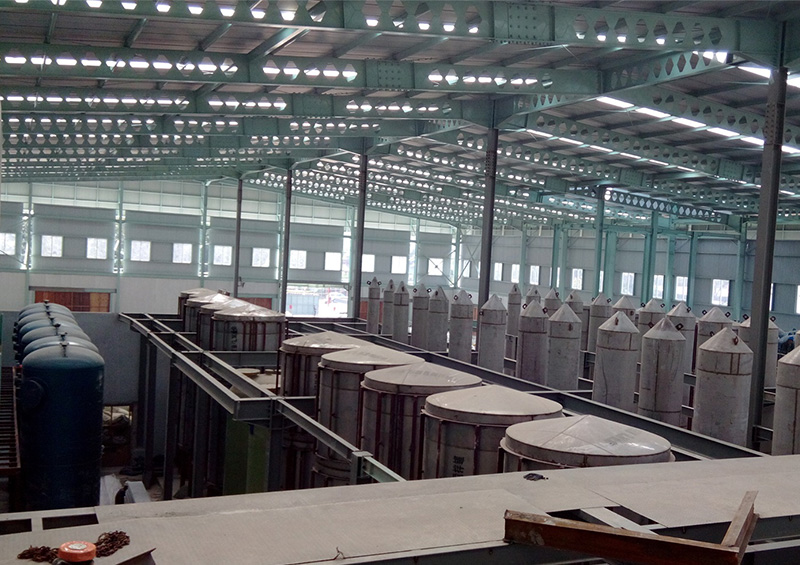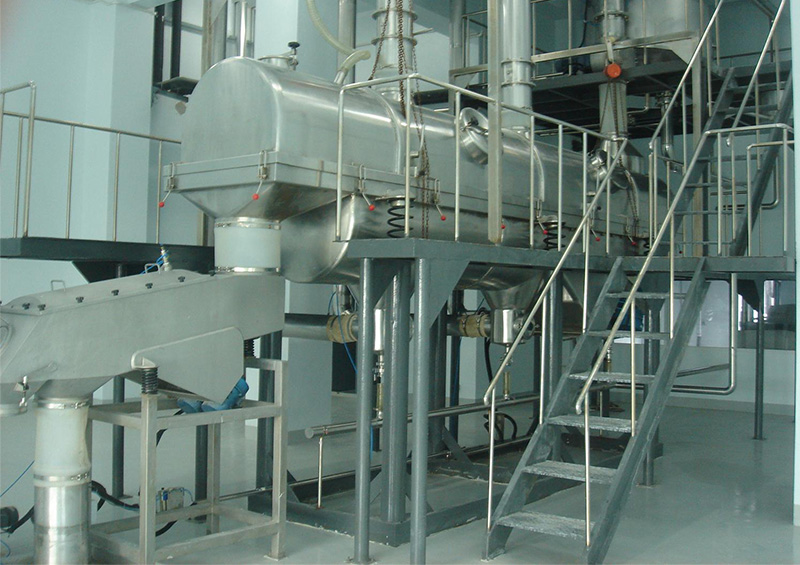Instant Coffee Production Line
Instant Coffee Production Line is mainly divided into three varieties: Arabic, Robusta, and Liberica. Now in the market, Arabic, and Robusta is more popular Arabic is planted at the attitude of 1000-1800m, while the altitude of Robusta is generally relatively lower, so the caffeine content of Arabica is relatively lower. In general, an Arabica Instant Coffee Production Line can produce about 0.3-0.4kg instant coffee, a Robusta coffee tree produces more.
Instant Coffee Production Line
Instant Coffee Production Line is mainly divided into three varieties: Arabic, Robusta, and Liberica. Now in the market, Arabic, and Robusta is more popular Arabic is planted at the attitude of 1000-1800m, while the altitude of Robusta is generally relatively lower, so the caffeine content of Arabica is relatively lower. In general, an Arabica Instant Coffee Production Line can produce about 0.3-0.4kg instant coffee, a Robusta coffee tree produces more.
Instant Coffee Production Line is a tropical evergreen perennial shrub, grows up to three to five years old will have fruit, open white clustered flowers, similar to tea flower of shape and smell, flowering only a few days, end of green coffee beans, then change into a yellow, red and darker color. Fruit maturity is usually from 6 to 10 months. In each piece of fruit,there are two coffee beans, ripen coffee bean-like red cherry,so it is called coffee Cherry.
After harvesting of coffee beans, by the dry and wet method to peel, dry, shell. Sometimes it is necessary to polish the coffee beans then enter the production line.
Features & Applications
Instant coffee equipment includes pretreatment, roasting, extraction, separation, aroma recovery, concentration, drying, and the agglomerator or subsystems as per client's requirements, such as packaging system and CIP system, etc.
i. Pre-treatment
Before process the coffee beans purchased from the market, it is necessary to do screen separation, dedusting and then store the beans for roasting. After separation, coffee beans are separated into different grades, different roasting parameters works for different grades of beans, so have the best roasting results.
ii. Roasting
A small coffee bean contains over 2000 substances, up to now we know around 700 kinds.
The roasting process is carbonation of the active ingredients contained in coffee beans, generate coffee oil, and produce high-quality coffee with a consistent style.
iii. Extraction
Roasted coffee has special aroma withstand relatively low temperature. The traditional extraction process loses the coffee aroma, so the coffee's aroma is not enough. In a lot of process, they add food additives to improve the taste of the coffee. Coffee lost its own attractive as nature's drink.
Our extraction process keeps the maximum nature aroma. The extracted aroma will be separated by flash separator and stored separately.
The extract section normally included six to eight extraction columns. Each extraction column is designed to withstand 25bar pressure, easy residue-discharging device and controlled by advanced technology.
Our special design increases the solid contents of the extract from 12-13% to 18-22%, so to reduce the investment of downstream process and decrease energy consumption.
iv. Separation
During the process of the coffee beans, it is inevitable to have some ash. And it is easy to mix some fibrous material in the coffee extract. In order to improve the quality and ensure there are no insoluble materials when the customers solve instant coffee in water. We suggest a separator after separation.
v. Concentration
Concentration has two purposes: increase the concentration of coffee extract, so to reduce the investment of drying section before drying process(spray dryer or vacuum freeze dryer); decrease the water content of extract, so save the energy.
In some processes, concentrated coffee extract or just coffee extract are sold in the market directly to produce tinned coffee, bottled coffee, and mixed drinks, or do some further process to make coffee biscuits, coffee candy or other coffee snacks and so on.
vi. Drying
There are two kinds of drying methods for Coffee: freeze-drying and spray drying.
i) Freeze Drying
Freeze drying section consists of cooling, foaming and pre-freezing section, freezing section, granulation section, drying cart loading section and drying section, as well as fines return section. Freeze drying maximally keep the coffee's flavor and color. The color, flavor, bulk density and solubility of the final product meet the market demands, so the price is much higher in the market.
But the investment, running cost of the freeze-drying plant are very high, and the fines return rate is also high, freeze-dryer is not a popular drying process.
ii) Spray Drying
With many years of research, we have developed special technologies and designs to meet different requirements of the product, such as product size, bulk density, and flowability, etc. In traditional coffee spray dryer, the fluidized bed is generally a combination of external cooling dry. The traditional coffee spray dryers have external fluid beds for drying and cooling. Our design has an inner fluidized bed to make the product meets the requirements of moisture contents and packing temperature.
The particle of the final product from the spray dryer is normally within the range of 100-350 micron, varies as per the configuration of the plant, processing parameters, and scale of the plant, etc.
Our special design also increased the product collection rate. As per the parameters from our customers, the highest product collection rate is around 99.7%.
The factors that influence the final product, not only the final drying section but also the fore process. To have the best product, it is necessary to coordinate the entire process.
vii. Agglomeration / granulation
To meet the market requirements of big particles and no dust, we also supply agglomeration equipment, which can make the small particles from spray dryer into big particles. Depends on requirements of different customers, the agglomerated particles are normally within the range of 1500-3500 microns.
viii. Automatic control
Therese different control levels for the plant, such as push-button type, semi-automatic control, and automatic control. Now the most popular one is the semi-automatic control system, which investment is low and operators, knowledge requirements are normal, and the relative parameters could be recorded.
The fully automatic control system, sometimes includes a SCADA system requires the least operators, but the operators' knowledge requirements are high. It will check and record all necessary production parameters, so it is easy to trace the quality of the product.
No matter the semi-auto or automatic control system, we have adopted standard components and modules for easy maintenance and upkeep of the customers. And the operators could set different parameters for different recipes, so as to produce different products to meet the requirements of different customers and different markets.
ix. WIP System
Cleaning of food processing equipment is a time-consuming work, which occupies a lot of production time, our company supply Washing In Place with different configurations for customers option.
Manufacturing Processes
● Raw coffee beans are delivered to the raw material tank by roots fan after sorting and passing through the vibrating screen.
● Raw coffee beans from the raw material tanks are weighed and then enter into the baking furnace in order to become ripe coffee beans.
● Ripe coffee beans are delivered into ripe material vessels through a cooling plate screen with the hole.
● After breaking and weighing, the ripe coffee beans are delivered to the extraction pot for extracting.
● Extraction liquid is conveyed to extraction liquid pot through filtering and cooling.
● To concentrate the extraction liquid through a double efficiency concentrator and then to pump them to concentrated liquid storage pot.
● To add assistant material to make match material when the concentrated liquid enters into the match material pot.
● After filtering, the well-matched concentrated liquid mixture is pumped into the spray dryer for spray drying by a piston pump. (if want to process the soluble granule, it can use fluidizing granulator to do it )
● After matching material, to make an inner packing for the dry powder. (For example: packed in small bags or bottles), after this, to pack the small bags or bottles in cartons and then to store them in a warehouse.
The Whole System Procedures
The whole production devides into three producedurs : one is pre-processing producture , the other is Extraction and Drying process, another is package.
1.Pre-processing procedure
Raw coffee bean
↓
Sorting election
↓(hopper lifting machine)
Screening
↓(Roots fan)
raw material vessel
↓
Roasting oven
↓
Cooling plate screen with hole
↓
small material vessel
↓
ripe material vessel
↓(Roots fan)
small material vessel
↓
Breaking
↓
Weighing
↓
Extraction
Extraction and Drying process
Broken ripe coffee bean
↓
Discharge hydronium water→heat exchanger→Piston Pump→Extraction pot→discharge the dregs
↓
Double-line filter
↓
Cooling→cool water, intenerated water→cooler
↓
Storage pot of extraction liquid
↓
Double efficiency film concentrator
↓
Storage pot of concentrated liquid
↓
Change pot
↓
Match material pot
↓
Piston pump
↓
Spray drying
Cooling→cool water→cool air and ice water→↓
Collecting dry powder→ adding sugar and milk fine
↓
Exterior packing
↓
Exterior packing and
Put them into warehouse
Technical Parameter
Specification | COF-50 | COF-100 | COF-300 | COF-500 | COF-1000 | COF-1500 |
Green bean processing capacity (Kg/H) | 110-150 | 220-300 | 660-900 | 1,100-1,500 | 2,200-3,000 | 3,300-4,500 |
Nominal Output (Kg/H) | 50 | 100 | 300 | 500 | 1,000 | 1,500 |
Annual Output (8000H/Y) (Ton/Y) | 400 | 800 | 2,400 | 4,000 | 8,000 | 12,000 |
Area required (m2) | 600-700 | 700-800 | 1,100-1,200 | 1,300-1,400 | 2,100-2,250 | 2,700-2,900 |
Product collection rate | 99-99.7% (Depend on the specification, configuration, and URS) | |||||
Final moisture contents (%) | < 3%(Depends on URS) | |||||
Bulk density of product (Kg/L) | 0.18-0.35 (Depend on the configuration, specification and processing parameters) | |||||
Average particle size (meshes) | 100-350 (Depend on the configuration, specification and processing parameters) | |||||
Discharge temperature (°C) | 35-45 °(Depends on configuration and URS) | |||||
Fuel | Suggest natural gas for drying section (please specify if not), steam boiler works with any fuel, including combustible waste material, such as extracted coffee beans mixed with coal etc) | |||||
Note:These parameters for reference only and will be changed as per URS.
Flow Chart
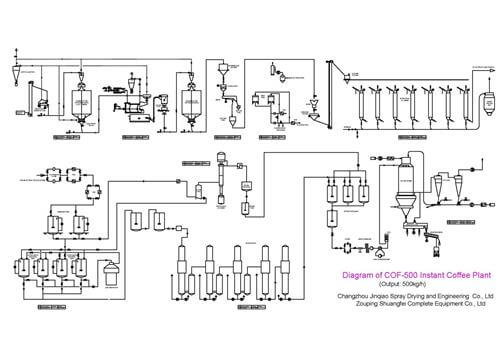

 CN
CN